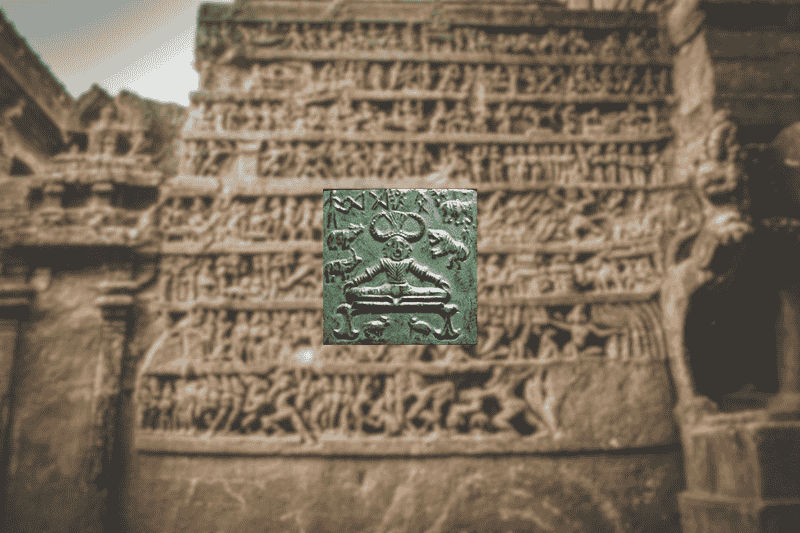The Saraswati Valley Civilization is also celebrated for its cultural and spiritual contributions. The Rigveda describes the Saraswati as a mighty, sacred river, personified as the goddess of wisdom and learning. This reverence for knowledge aligns with the Indian Knowledge System, which integrates philosophy, science, and spirituality. The civilization’s artifacts, including seals, terracotta figurines, and amulets, suggest a rich spiritual life, with practices that laid the foundation for modern Hinduism, including yoga.
Among the most iconic artifacts from the Saraswati Valley Civilization is the Pashupati Seal, unearthed at Mohenjo-Daro in 1928 by archaeologist R.D. Banerji. This small steatite seal depicts a seated figure, often identified as a proto-Shiva, in a meditative posture resembling Padmasana or Siddhasana. Surrounded by animals, the figure is interpreted as “Pashupati” (Lord of Beasts), a precursor to Shiva, symbolizing mastery over nature and the self. The cross-legged stance, with hands resting on the knees, mirrors modern yoga asanas, suggesting that meditative practices were integral to the civilization’s spiritual life.
The Pashupati Seal, dated to circa 2600 BCE, is considered one of the earliest depictions of yoga. Its discovery confirms that yoga, as a discipline uniting body, mind, and spirit, predates written texts like the Yoga Sutras of Patanjali (circa 400 CE). The seal’s intricate craftsmanship reflects the civilization’s artistic skill, while its spiritual imagery underscores the depth of the Indian Knowledge System.
Recent archaeological and scientific advancements have deepened our understanding of the Saraswati Valley Civilization. In 2019, researchers analyzing sediment from the Ghaggar-Hakra basin provided evidence that the river was perennial during the civilization’s early phase, supporting settlements like Kalibangan and Banawali. Satellite imagery and geophysical studies have traced the river’s paleochannels, confirming its course from the Himalayas to the Arabian Sea, as described in the Rigveda.
Excavations at Rakhigarhi, led by the Archaeological Survey of India, uncovered a 5,000-year-old water management system, including a 4-foot-deep storage area, highlighting the civilization’s engineering prowess. At Kalibangan, a tiled floor dated to 2600 BCE and fire altars suggest advanced construction and ritual practices. These findings challenge earlier assumptions that the civilization was solely Indus-centric, reinforcing the term “Indus-Saraswati Civilization” to reflect the Saraswati’s dominance, with over 63% of sites along its banks.
The Saraswati Heritage Project, supported by the Indian government, continues to map the river’s course and fund excavations, aiming to uncover more about its role in shaping ancient Indian society. These efforts align with Namo Bharati Vidyalay’s mission to promote the Indian Knowledge System, celebrating the Saraswati Valley’s contributions to yoga, urban planning, and spiritual philosophy.




